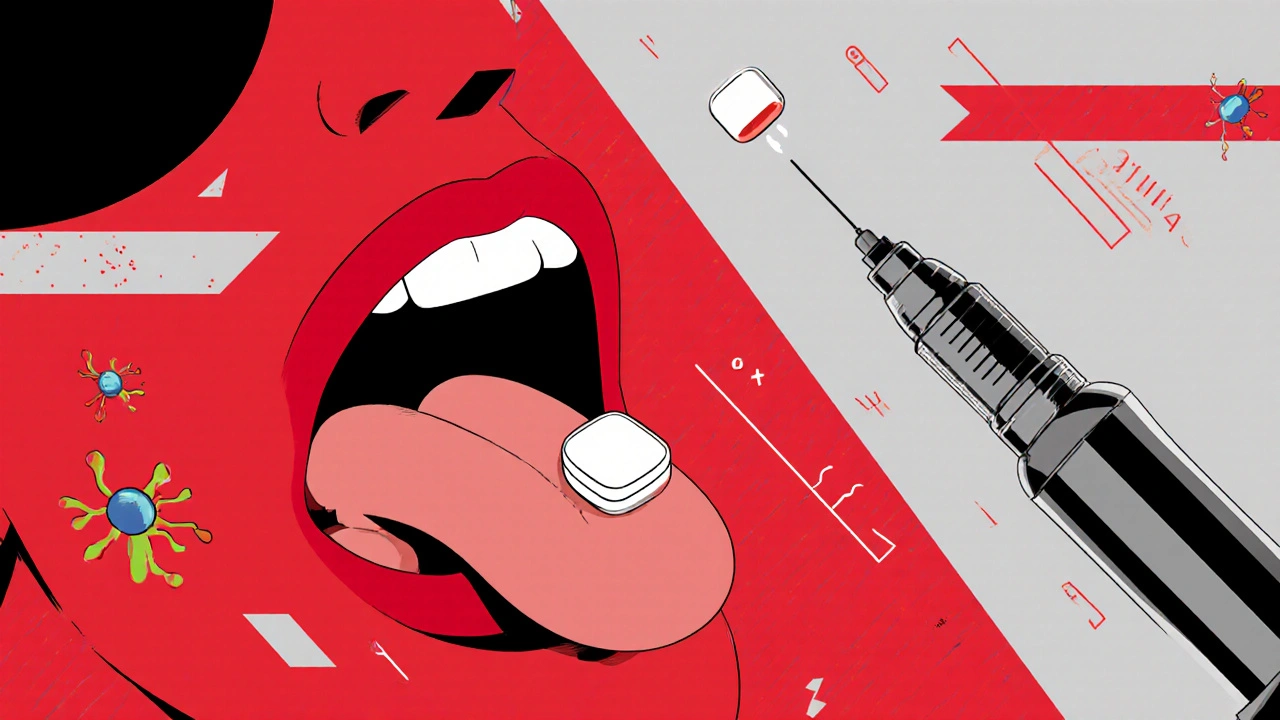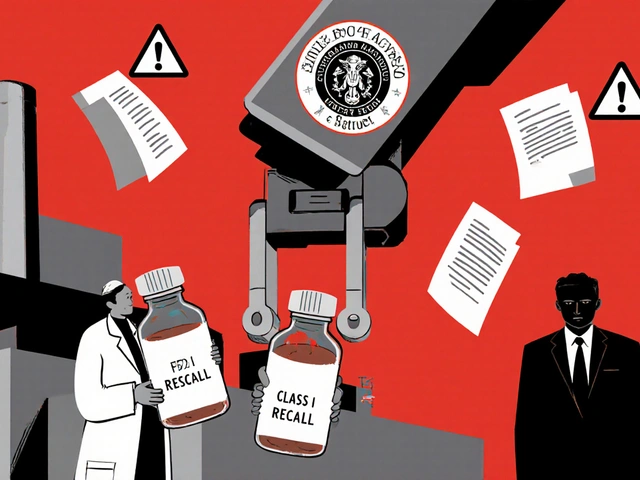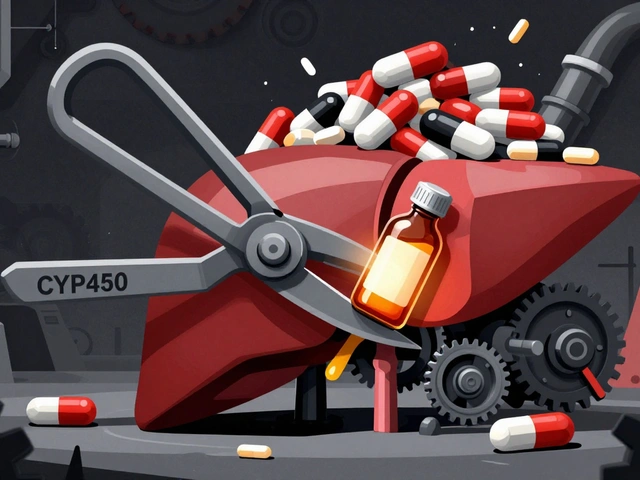When a migraine hits, time isn’t just money-it’s relief. Maxalt (rizatriptan) is one of the most prescribed triptans for sudden, severe migraine attacks. But is it the best choice for you? Many people try Maxalt, only to wonder if another option might work faster, last longer, or cause fewer side effects. The truth? Not all triptans are the same. Some work better for nausea-heavy attacks. Others are gentler on the heart. A few even come in forms you can take without swallowing a pill. Let’s cut through the noise and compare Maxalt with the most common alternatives you’re likely to hear about from your doctor.
How Maxalt (Rizatriptan) Actually Works
Maxalt belongs to a class of drugs called triptans. These aren’t regular painkillers. They target the root cause of migraine: swollen blood vessels in the brain and excess signaling of pain-related chemicals like serotonin. Rizatriptan binds to serotonin receptors, calming those overactive nerves and shrinking the inflamed vessels. That’s why it stops migraines instead of just masking the pain.
Maxalt comes in two forms: a regular tablet you swallow and a rapidly dissolving tablet (Maxalt-MLT) that melts on your tongue. That’s helpful if you’re nauseous and can’t keep pills down. Most people feel relief within 30 to 60 minutes. About 70% of users report significant improvement within two hours, according to clinical trials published in Neurology. But it doesn’t work for everyone-and that’s where alternatives come in.
Sumatriptan: The Original Triptan
Sumatriptan (Imitrex) was the first triptan approved in the U.S. back in 1993. It’s still the most widely used. Compared to Maxalt, sumatriptan works a bit slower-typically 45 to 90 minutes for full effect. But it’s available in more forms: pills, nasal spray, and even a self-injecting pen. The injection can knock out a migraine in under 10 minutes, which is a game-changer for people who can’t wait an hour to feel better.
Maxalt is slightly more effective at reducing migraine pain within two hours, according to a 2021 Cochrane review. But sumatriptan’s injection form gives it an edge for severe, fast-moving attacks. If you’ve tried Maxalt and still feel like you’re fighting the migraine, switching to sumatriptan injection might be the move. The downside? Injections can cause chest tightness or dizziness, and not everyone is comfortable with needles.
Eletriptan (Relpax): Longer Lasting, Slower Start
If you get migraines that come back after a few hours, eletriptan (Relpax) might be worth considering. It’s slower to kick in-about 60 to 90 minutes-but it lasts longer. Studies show that 60% of users stay pain-free for 24 hours after taking Relpax, compared to 50% with Maxalt. That’s a meaningful difference if you’re tired of rebound headaches.
Eletriptan also has a higher success rate in relieving nausea and sensitivity to light, two of the most disabling migraine symptoms. But it’s not for everyone. It can interact with certain heart medications and antidepressants. If you’re on any of those, your doctor will likely rule it out. Maxalt has fewer drug interactions, making it safer for people on multiple meds.

Zolmitriptan (Zomig): The Nasal Spray Option
For people who can’t swallow pills during a migraine, zolmitriptan (Zomig) offers a nasal spray and a dissolving tablet. The spray gets absorbed through the nose, bypassing the stomach entirely. It starts working in about 15 to 30 minutes-faster than Maxalt’s regular tablet and even quicker than its dissolving form. One study found that 58% of users were pain-free within two hours using the spray, compared to 55% with Maxalt-MLT.
But the spray can irritate the nose and throat. Some users report a bitter taste or nasal burning. If you’ve tried nasal sprays before and hated them, this might not be worth it. Maxalt-MLT is often preferred because it’s tasteless and doesn’t require inhaling anything. Still, if speed and avoiding nausea are your top priorities, Zomig spray deserves a spot on your shortlist.
Almotriptan (Axert): The Gentle Alternative
Almotriptan (Axert) is often called the “gentle” triptan. It’s not the fastest, but it’s the least likely to cause side effects like dizziness, tingling, or chest pressure. In clinical trials, users reported fewer adverse events with Axert than with Maxalt or sumatriptan. That makes it a smart pick for older adults or people with mild heart conditions who still need effective relief.
It takes about 60 minutes to work-slower than Maxalt-and the dose is fixed at 12.5 mg. You can’t adjust it. That’s a drawback if you’ve found that a lower dose of Maxalt works fine for you. But if you’ve had bad reactions to other triptans, Axert is worth a trial. It’s also one of the few triptans that doesn’t worsen hypertension in most people.
Non-Triptan Options: What Else Is Out There?
Triptans aren’t the only game in town. If you’ve tried several and still can’t tolerate them-or if they don’t work-there are other paths.
Ubrogepant (Ubrelvy) and rimegepant (Nurtec ODT) are newer drugs called gepants. They don’t affect blood vessels like triptans do. Instead, they block CGRP, a protein linked to migraine pain. They’re safe for people with heart disease and can be taken with other medications. Rimegepant even comes as a dissolving tablet you can take daily to prevent migraines. That’s something Maxalt can’t do.
But they’re expensive. Without insurance, a single dose can cost $100 or more. Maxalt generics are often under $10 per tablet. If cost matters, triptans still win.
There’s also ergotamines like DHE (Migranal), which are older and used less now. They’re powerful but carry a higher risk of nausea and can’t be used frequently. Most doctors only recommend them if triptans and gepants have failed.
Which One Should You Choose?
There’s no single best migraine drug. The right choice depends on your symptoms, your body, and your life.
- If you need speed and can’t swallow pills: Maxalt-MLT or Zomig nasal spray.
- If you get rebound headaches or migraines that last all day: Eletriptan (Relpax).
- If you have heart concerns or take other meds: Almotriptan or a gepant like Nurtec.
- If you want fastest possible relief and don’t mind needles: Sumatriptan injection.
- If you’re paying out-of-pocket and need affordability: Generic rizatriptan or sumatriptan tablets.
Many people end up trying two or three before finding their match. That’s normal. Don’t give up after one failed try. Keep track of what works and what doesn’t. Note the time it takes to work, how long relief lasts, and any side effects. Bring that log to your doctor. It’s the best way to personalize your treatment.
What to Avoid
Some things can make migraines worse-or turn a treatable attack into a dangerous one.
- Don’t take more than 10 doses of triptans per month. Overuse can lead to medication-overuse headaches, which are harder to treat than the original migraines.
- Don’t combine triptans with SSRIs or SNRIs without talking to your doctor. There’s a rare but serious risk of serotonin syndrome.
- Don’t use triptans if you have uncontrolled high blood pressure, heart disease, or a history of stroke. They constrict blood vessels, which can be risky.
- Don’t assume all triptans work the same. Even small differences in absorption or metabolism can change how well one works for you.
When to Call Your Doctor
See your doctor if:
- Your migraines are getting worse or more frequent.
- You need more than two doses of Maxalt or any triptan in a week.
- You feel chest pain, pressure, or tightness after taking a triptan-even if it’s mild.
- You have new neurological symptoms like weakness, confusion, or vision loss during a headache.
These aren’t normal side effects. They could signal something more serious. Don’t ignore them.
Is Maxalt better than sumatriptan?
Maxalt works slightly faster and more reliably for pain relief within two hours, according to clinical data. But sumatriptan comes in an injectable form that works in under 10 minutes-making it better for severe, sudden attacks. If you can’t swallow pills, sumatriptan nasal spray is also an option. Neither is universally better-it depends on your symptoms and preferences.
Can I take Maxalt every day?
No. Maxalt is meant for acute attacks only. Using it more than 10 days a month can cause medication-overuse headaches, which are harder to treat. If you need frequent treatment, talk to your doctor about preventive options like beta-blockers, CGRP inhibitors, or lifestyle changes.
What’s the cheapest alternative to Maxalt?
Generic rizatriptan is the cheapest direct alternative, often under $10 per tablet with a coupon. Sumatriptan tablets are also affordable and widely available. If cost is your main concern, these two are your best bets. Newer drugs like Ubrelvy or Nurtec cost $100+ per dose and are rarely covered without prior authorization.
Do triptans work for tension headaches?
No. Triptans like Maxalt are designed specifically for migraines, which involve neurological changes and blood vessel swelling. Tension headaches are caused by muscle tightness and respond better to NSAIDs like ibuprofen or acetaminophen. Taking a triptan for a tension headache won’t help-and could expose you to unnecessary side effects.
Is there a non-pill option for Maxalt?
Yes. Maxalt-MLT is a dissolving tablet that melts on your tongue-no water needed. It’s ideal if you’re nauseous or vomiting during a migraine. Other triptans like Zomig and Relpax also come in dissolving forms. For the fastest relief, sumatriptan injection is an option, though it requires a prescription and training.
If you’ve been stuck with the same migraine treatment for years, it’s time to ask: Is this still the best option? Your body, your triggers, and your life have changed. So should your medication. Talk to your doctor, keep a symptom log, and don’t settle for anything less than real relief.






Maxalt-MLT is my MVP 🙌 I once had a migraine so bad I was crying in the bathroom at work and that little tablet melted on my tongue like magic. No swallowing, no nausea, just… peace. I love it. Also, the fact that it doesn’t make me feel like I swallowed glass? Chef’s kiss.
November 19Margaret Wilson